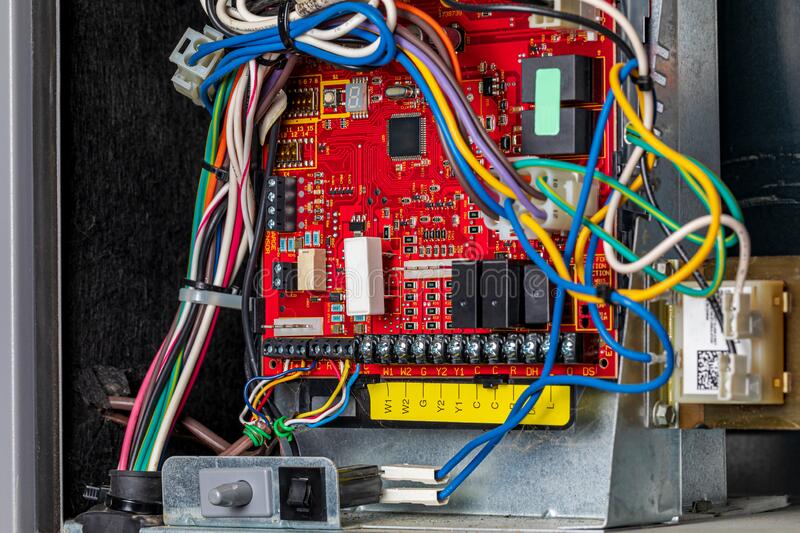Control Board Replacement
Typical control board replacement for HVAC units.

The HVAC Control Board is where the thermostat wires connect to your heating and cooling system. In most cases the control board can be found at your furnace or air handler. It essentially functions as the "brain" of the HVAC unit. Your control board serves several purposes in your furnace and air handler unit. One of its primary functions is to receive information and signals from your thermostat and furnace sensors, makes decisions based on that information, then distributes messages and more information to other components within the system.
Definition: The HVAC control board is where the thermostat wires connect to your heating and cooling system, and functions as mini-computer to tell the unit what to do.
Scope of Work
- Perform required lockout/tag out safety protocol as per NFPA70E of all high-voltage electrical circuits prior to beginning work on the existing unit.
- Label all field side and factory side wiring prior to removal of the existing control board.
- Demo and dispose of existing control board
- Furnish and install (1) new OEM style main 24v control board.
- Terminate all existing, labeled field and factory side wiring on the newly-installed control board and tighten all applicable terminals to manufacturer's specifications.
- Configure newly-installed control board if applicable and verify voltage prior to start-up and testing.
- Perform basic system start-up and testing to ensure proper operation prior to departure.
This article has been shared by Direct Service, Construction and Design to specifically accommodate our intended clientele. The intent of sharing this information is to better inform the public of these general topics, expand knowledge and safety for all and provide crucial information in regard to their MEP and building systems and/or assets. It is NOT our recommendation that any article recommendations or how-to scenarios be attempted by anyone other than a qualified or competent person.
